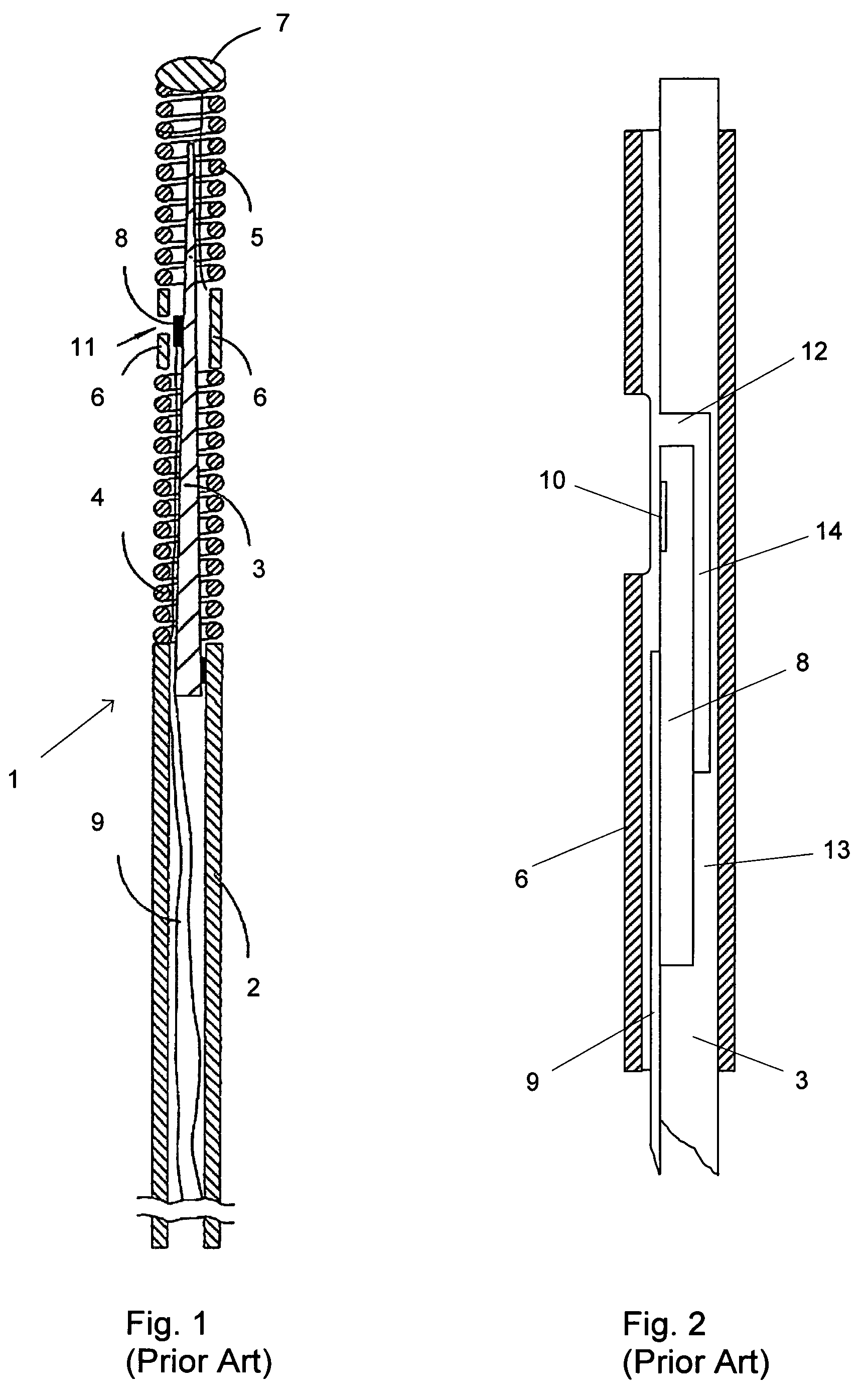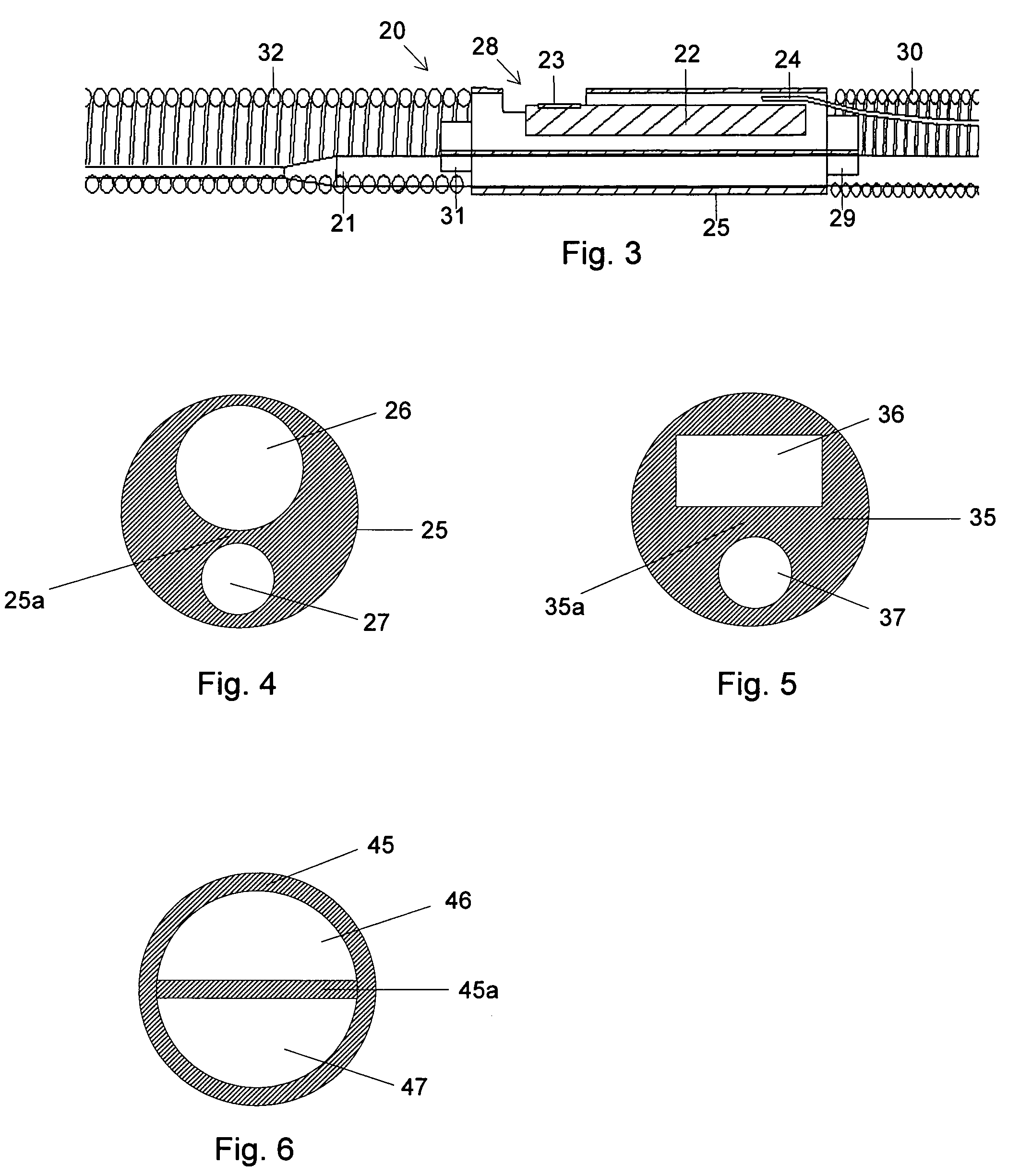Sensor and guide wire assembly
a technology of guide wire and sensor, which is applied in the direction of sensors, catheters, diagnostics, etc., can solve the problems of so-called bending artefacts, and achieve the effect of making the manufacturing of a sensor and a guide wire assembly simple and cheaper
- Summary
- Abstract
- Description
- Claims
- Application Information
AI Technical Summary
Benefits of technology
Problems solved by technology
Method used
Image
Examples
second embodiment
[0033]As was indicated above, the shape of a through opening in a jacket or sleeve can according to the present invention be adapted to the shape of the member to be positioned therein. FIG. 5 illustrates a sleeve or jacket 35, in which two through openings 36, 37 have been created. Here the first through opening 36 has been given a rectangular cross-section, which is adapted to a rectangular cross-section of a sensor chip (not shown in the figure). Like the embodiment shown in FIG. 4, the second through opening 37 has been given a circular cross-section in order to fit to a circular cross-section of a core wire (not shown in the figure), but other cross-section configurations are also possible. A rectangular cross-section, adapted to a core wire having a corresponding cross-section, could, for example, be advantageous in that it would prevent the core wire from rotating inside the jacket.
[0034]The through openings shown in FIGS. 4 and 5 are preferably made by drilling, punching or ...
fourth embodiment
[0035]FIGS. 7 and 8 illustrate a jacket 55 according to the present invention. This embodiment also includes an aperture 58 through which pressure may be sensed. This embodiment includes two crimps 57a and 57b in order to retain the core wire (not shown) in the lower portion of the jacket 55. Crimps 57a and 57b include members 55a and 55b, respectively, which protrude from the inner surface of the jacket into the central portion of the jacket in order to retain the core wire (not shown) in a location separate from the location of the sensor chip (not shown).
fifth embodiment
[0036]FIG. 9 illustrates a jacket 65 according to the present invention. This embodiment is a variation of the embodiment shown in FIGS. 7 and 8 and includes a crimp 67a at an end portion of the jacket 65. This embodiment also includes a member 65a which protrudes from an inner surface of the jacket toward a central portion of the jacket to retain the core wire (not shown) separate from the sensor chip (not shown).
PUM
| Property | Measurement | Unit |
|---|---|---|
| diameter | aaaaa | aaaaa |
| inner diameter | aaaaa | aaaaa |
| elastic | aaaaa | aaaaa |
Abstract
Description
Claims
Application Information
 Login to View More
Login to View More - R&D
- Intellectual Property
- Life Sciences
- Materials
- Tech Scout
- Unparalleled Data Quality
- Higher Quality Content
- 60% Fewer Hallucinations
Browse by: Latest US Patents, China's latest patents, Technical Efficacy Thesaurus, Application Domain, Technology Topic, Popular Technical Reports.
© 2025 PatSnap. All rights reserved.Legal|Privacy policy|Modern Slavery Act Transparency Statement|Sitemap|About US| Contact US: help@patsnap.com



